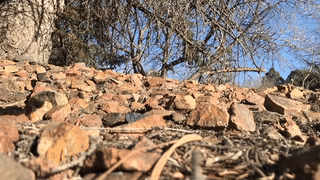Video
Yellowstone
The Regal and Graceful Yellowstone Elk
When you visit Yellowstone, your chances of seeing Elk (Cervus elaphus) is pretty high. In the Summer months, Yellowstone is home to about 10,000 to 20,000 elk in 6 to 7 different herds. The numbers vary of course, because the Elk are free to roam outside the park as well. In the Winter, most of the Elk prefer to stay in lower elevations outside of Yellowstone, but around 5000 or so will remain in the park.
Elk are Yellowstone's most plentiful ungulate. (Ungulates are any members of a diverse group of primarily large mammals that includes odd-toed ungulates such as horses and rhinos, and even-toed ungulates such as cattle, pigs, giraffes, camels, deer, and hippopotamuses.) Elk are important food for mountain lions, bears, and scavengers such as eagles and coyotes. But it’s the Yellowstone wolf that claim the most elk, comprising about ninety percent of the wolf’s kills in the winter months.
The changes in how many Elk populate the park have a direct effect on many things. Too many elk can have a negative impact on vegetation, soil fertility and plant variety. They can have a negative crunch on other animals too. Competition with elk can influence the diet, habitat selection, and population growth of moose, bighorn sheep, bison, antelope, and mule deer. When the wolves were reintroduced into Yellowstone in 1995, one of the unexpected impacts it had, was regulating the elk population. Mother Nature always knows best.
The males (bulls) can weigh about 700 pounds and stand about 5 feet at the shoulder. The females (cows) don’t weigh as much at around 500 pounds and a little shorter too. The calves are usually around 30 pounds when born in May to late June and they are particularly adorable.
The bull elk grow antlers, rather large and sharp, for the mating season in September and October. They keep the antlers all winter and usually drop off in March or April the following year. They begin growing back soon after.
Elk feed on grasses, sedges, other herbs and shrubs, the bark of aspen trees, conifer needles, burned bark and aquatic plants. Before the wolves were reintroduced, the elk were driving the beavers away. They would wade into the water where the beavers were building their dams for the coming winter, and eat all of the branches, shrubbery and aquatic plants the beavers were using, destroying their hard work. When the wolves began regulating the elk population again, the beavers slowly returned. Chalk another one up for Mother Nature.
When folks ask me where they should go to see elk in Yellowstone, I usually tell them not to worry, the elk will find them. In case you don’t want to wait for the elk to cross your path though, here are some of the best places to see them most days:
In Summer, head on over to Gibbon Meadows, Elk Park, and Lamar Valley. If they aren’t there, I’d be very surprised!
In Autumn, during their mating season, head for the northern range, including Mammoth Hot Springs and Madison River.
And in Winter, it’s a little more difficult to find them. They migrate north to the northern range and around Gardiner, Montana. Also, along the Firehole and Madison rivers and south to the Jackson Hole Elk Refuge in Jackson, Wyoming.
So not to worry. When you visit Yellowstone you are almost guaranteed to see elk. They are fascinating creatures to watch, especially in the fall season. Just don't get too close. They are known to be a little skittish and will charge you if they feel threatened. Here is a video I found of a medium sized elk having an encounter with a snowmobile driver in Yellowstone Park this winter. Those antlers are sharp. I bet he was a bit nervous! =]:)













0 comments
Please let me know what you think. =]:)